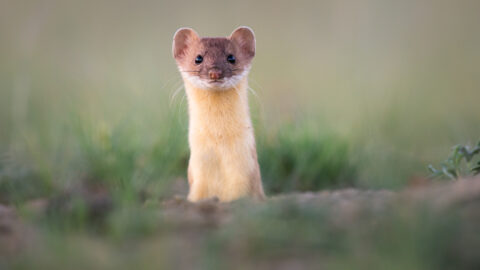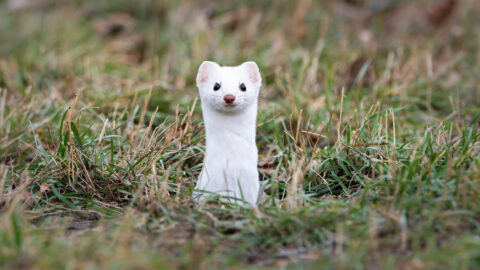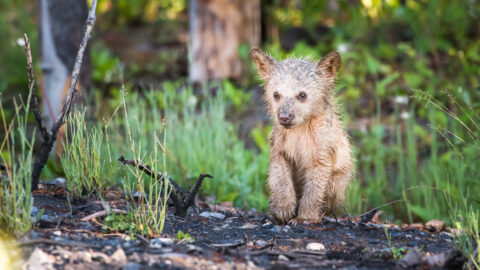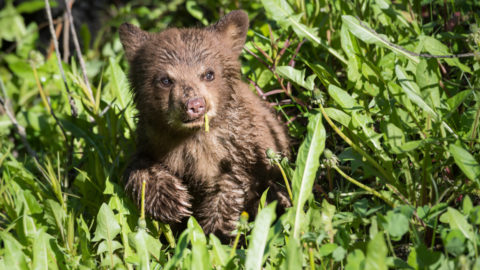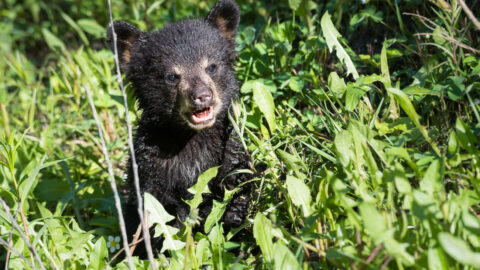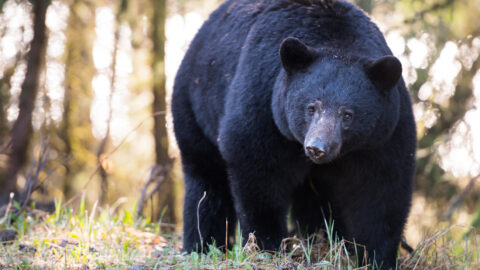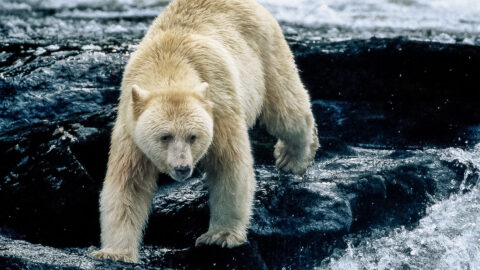We Don’t Know What We Don’t Know
Chapter Three
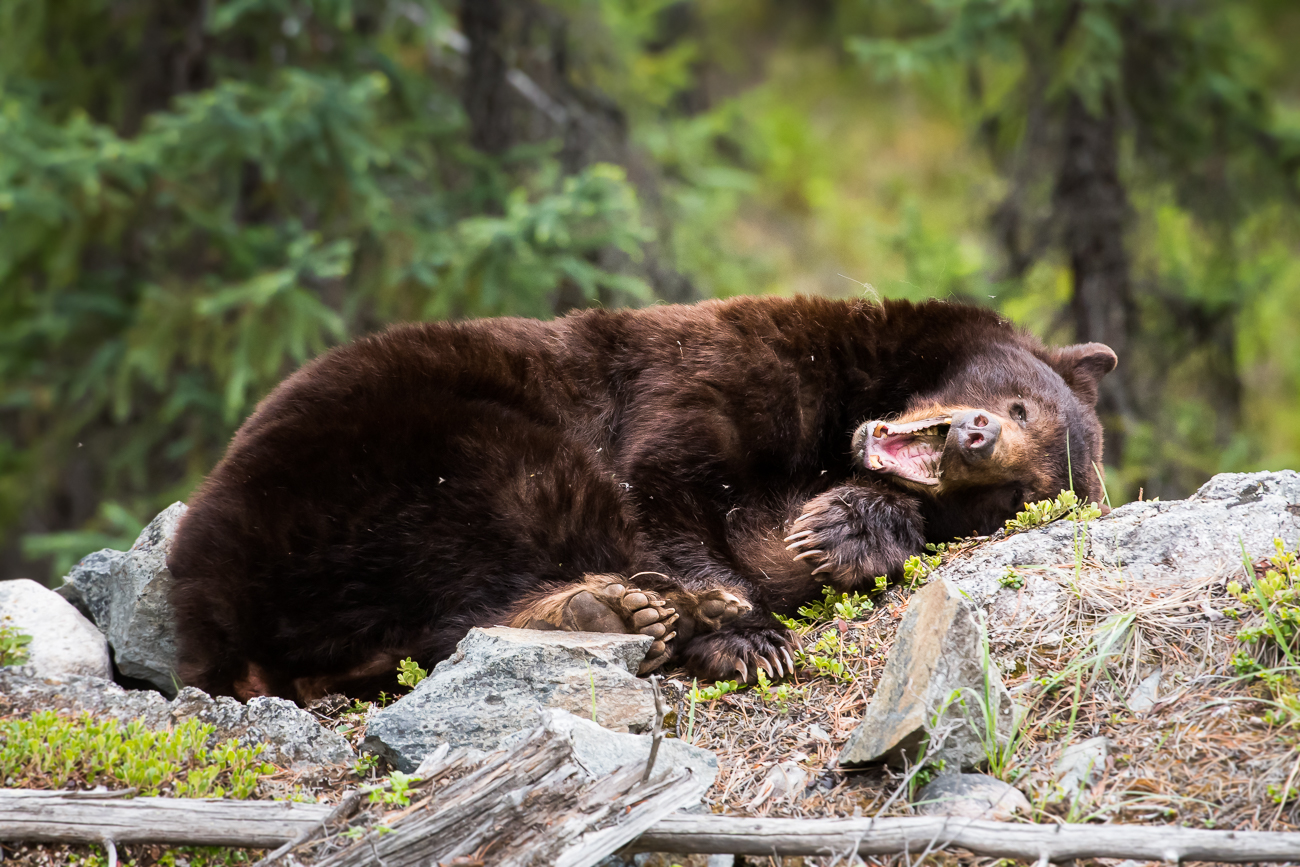 If you’re into science, it’s a topic that might excite you. If you’re not? It’s probably a topic that puts you to sleep.
If you’re into science, it’s a topic that might excite you. If you’re not? It’s probably a topic that puts you to sleep.
Don’t go to sleep! You need to hear this!
Not only is genetics interesting, it’s also critical knowledge we need to understand to be good citizens – to make good, informed decisions for people and nature.
How so?
Genetics is basically the behind-the-scenes story of every organism’s design – it’s how and why certain characteristics are passed down from parent to offspring.
Within every living cell found in a multi-cellular species – organisms like trees, your family pet, grizzly bears and, well, humans (who have trillions of cells) – is a nucleus. This is the cozy home of chromosomes which, in turn, house DNA (well, DNA can also be found in mitochondria, but mostly it’s found here, so moving on!) and that, in turn, is the house genes built.
You’re not wrong if you’re picturing cells as basically micro versions of Matryoshka dolls – those funny wooden Russian doll-things that open up to produce more little wooden Russian doll-things. But rather than produce weird, tiny wooden Russian dolls, the series of smaller houses in a cell eventually lead to a book of traits – genes – that the parents give to their offspring.
And it’s a neat book! It’s like an Ikea instruction manual for the body, but with assembly automated and all the parts actually included in the box.
See? It is neat!
Especially when you consider there’s multiple genes found in each strand of DNA. And in humans, for example, there are two strands of DNA in each chromosome. Usually there are 46 chromosomes in the nucleus of a cell, with half coming from the father and half coming from the mother.
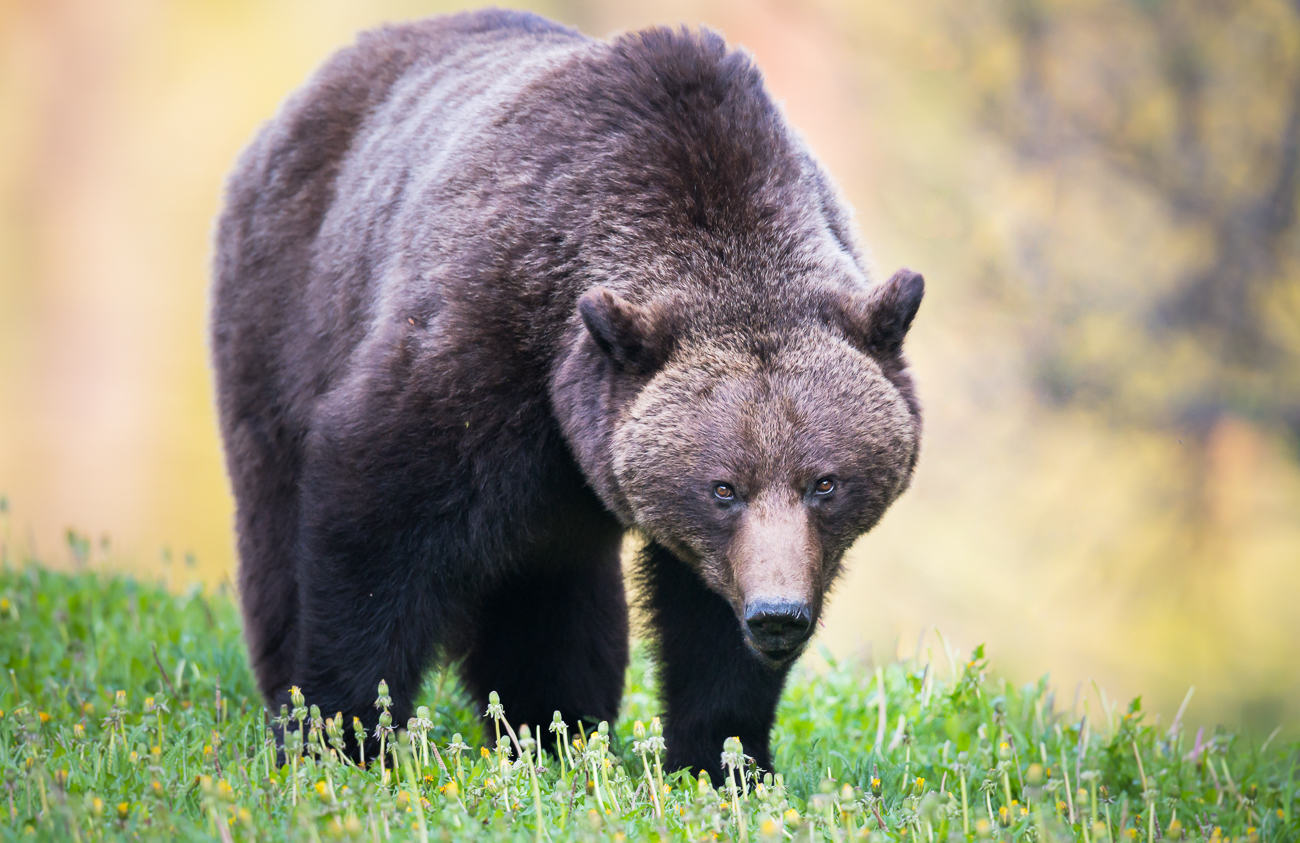 Bears actually have more chromosomes than humans – 74 – and ferns (yes, those plants that have stuck with planet Earth through thick and thin, dinosaurs and humans) have over 1200.
Bears actually have more chromosomes than humans – 74 – and ferns (yes, those plants that have stuck with planet Earth through thick and thin, dinosaurs and humans) have over 1200.
So, smaller is better when it comes to chromosomes numbers!
As you know from CSI reruns, cells – DNA – can be shed, but are repaired and grow thanks to a process called mitosis which, without going too far into detail, is absolutely critical. Without mitosis? Cells deteriorate and, well, bad things happen. Capiche?
Why is it important to know all of this?
Well, it might help you on a test or spark your passion for genetics and lead you to a career with the Human Genome Project or help you cure cancer. It also sets you up for understanding this story:
Nature evolved three types of weasels in Canada – two of which can be found in Mount Robson: The short-tailed weasel, designed for the marshy forest of the boreal, and the long tailed-weasel, which is designed for open meadows and the high alpine.
To help them be their best selves, nature also gave them a superpower: The ability to change colour.
When the days get shorter, the lack of light actually triggers a hormone reaction in the weasel called photoperiod. Which, in non-science speak, means that instead of producing the brown pigments in their fur so they can blend into their habitat during the summer, they produce white pigments to blend into the increasingly snowy landscape.
And when the days start getting longer? The opposite happens.
It gets cooler.
In areas where there is no snow – and daylight hours don’t fluctuate hugely – the weasel doesn’t change colours. And in the shoulder seasons of spring and fall when snow is patchy? The weasel’s photoperiod process mimics the patchwork landscape creating patchwork camouflage.
But because this process is triggered more by light than temperature, if the snow doesn’t fall in the winter, weasels can really stand out and, according to recent studies, that means decreases in weasel populations and increases in rodent populations.
Interesting, eh? And all of that? Genetics!
You see, not every characteristic is passed down from parents to offspring – some characteristics are influenced by the environment. But with time, those adaptations can mutate the genes of a species, becoming a characteristic that is passed down to the next generation.
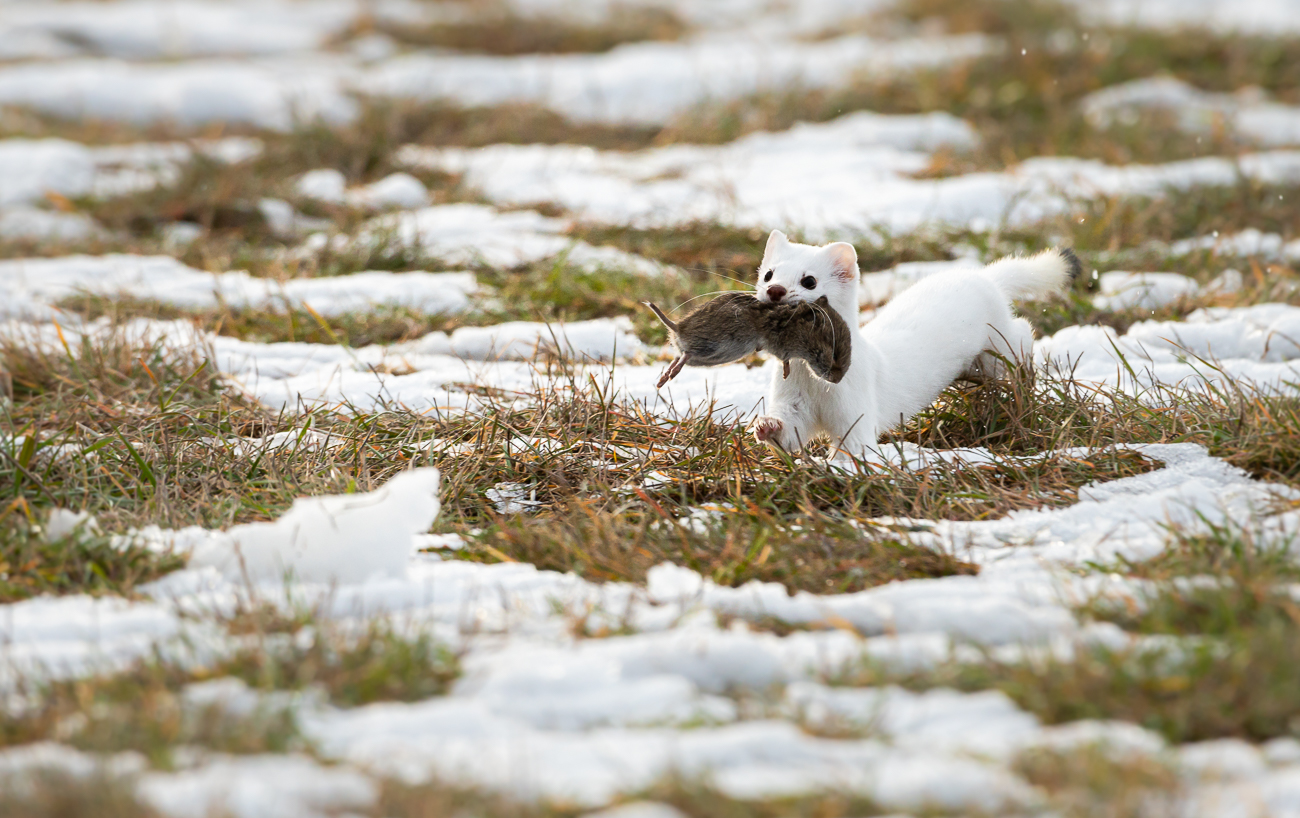 It’s basically how one origin species evolved into multiple species with different genetic make-up to help fulfill different niches in different habitats. It’s also how each individual species further evolved within the context of their biome, creating specific traits and tools – genes – that are now passed down through the generations, as is the case with seasonal weasel camouflage.
It’s basically how one origin species evolved into multiple species with different genetic make-up to help fulfill different niches in different habitats. It’s also how each individual species further evolved within the context of their biome, creating specific traits and tools – genes – that are now passed down through the generations, as is the case with seasonal weasel camouflage.
Now get this!
Some genes are dominant and some are recessive.
And what does that mean?
Basically, dominant genes are like scissors and recessive genes are like paper: Dominant genes win in a battle of genetic Rock-Paper-Scissors to determine what traits gets expressed in an organism and what traits don’t.
For humanoids, curly hair is dominant and so too is dark hair colour. On the other side of the leger, blue eyes, for example, is recessive.
That means, most often, blue eyes will be expressed – occur – when both parents are also blue-eyed – when there is no dominant, say, brown-eyed colour gene present to override the recessive blue-eyed gene.
But there’s an exception, obviously.
If both parents are, say, brown-eyed, but both carry the blue-eyed recessive gene, it is possible to produce a blue-eyed baby if both parents pass forward that blue-eyed recessive gene.
Now eye colour is ascetic – it has no real-world value. But in nature, the interplay between dominant and recessive genes can matter a great deal.
Consider this: Black bears aren’t only black in colour.
You see, each ecosystem is a bit different and while traditional black fur helps them blend in, say, Mount Robson, it’s less helpful in drier landscapes, like the American southwest.
For that reason, black bears can also have brown, cinnamon or blond fur. It’s called a colour phase – in every way a black black bear is the same as a cinnamon black bear, they just have different colours to help them feel better about life when trying to eat in a hostile environment.
Make sense? Good. Now it’s time to blow your brain.
Black bears can also be blue. They can also be white. And in both of these cases? They’re not simply colour phases, they’re subspecies.
What’s the difference?
Subspecies are a sub-population of animals that, while still part of the larger species, have evolved differently than, say, black bears (and cinnamon and blond and brown black bears) found elsewhere.
Stay with me.
Snow and ice once blanketed North America. As it retreated, the value of white fur became less important, so that colour phase stopped expressing itself in the larger population.
But on Canada’s west coast, where salmon make up a huge part of a black bear’s diet, guess what helps a bear be more camouflaged in, say, the rapids of a stream where salmon spawn? White fur!
 So, on Canada’s west coast – and only on Canada’s west coast – a sub-population of black bears – known as Kermode or spirit bears – has evolved differently from black bears elsewhere in order to ensure that the recessive white fur gene actually continues to exist.
So, on Canada’s west coast – and only on Canada’s west coast – a sub-population of black bears – known as Kermode or spirit bears – has evolved differently from black bears elsewhere in order to ensure that the recessive white fur gene actually continues to exist.
In the Great Bear Rainforest – the central coast of British Columbia – one out of every ten black bears is born with white fur. Which gives them better camouflage for fishing. Which means they catch more fish than other bears. Which means more salmon is making it to the forest floor. Which means the trees grow bigger. Which means we all get to breathe.
See what nature did there?
A very important ecosystem to everyone, the world over, evolved a slightly different kind of black bear so it could feed itself more easily.
Neat!
And guess what? There are other black bear subspecies with equally unique genetics that have evolved to better transport food around other specific ecosystems. Like the aforementioned blue or Glacier black bears, which are better adapted to fishing in glacially fed, blue-coloured Alaskan rivers.
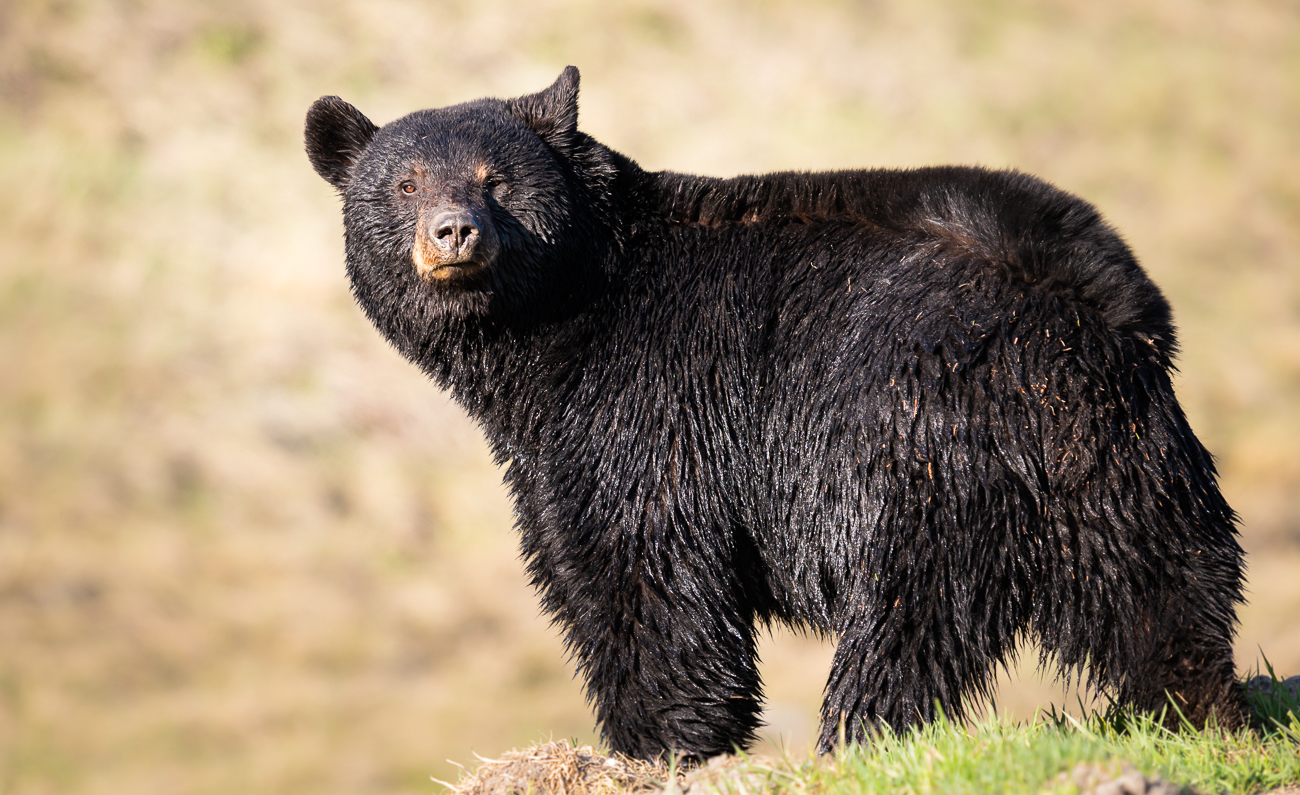 So, to recap, a black bear isn’t only black in colour, it can also be brown, cinnamon or blond. These are normally occurring colour phases that can be found everywhere black bears live because these colours help black bears get different kinds of food everywhere.
So, to recap, a black bear isn’t only black in colour, it can also be brown, cinnamon or blond. These are normally occurring colour phases that can be found everywhere black bears live because these colours help black bears get different kinds of food everywhere.
And the white Kermode or blue Glacier bear? They’re part of a genetically-unique subspecies because their fur colour is only helpful in specific landscapes.
See? That’s not just neat genetics; it’s very consequential genetics.
Why? Go back to the human example:
Two brown-eyed parents can produce a blue-eyed baby if both carry and pass forward the recessive blue-eyed gene. But if two brown-eyed parents both don’t carry the recessive gene – if a blue-eyed father and brown-eyed mother have a baby – their offspring will almost certainly be brown-eyed. In other words, by looking at the parents, you can’t necessarily tell what eye-colour their child will have.
And though that’s absolutely fine when the discussion is eye colour, it can be a big, big issue when it comes to deciding the fate of a subspecies.
How so?
Two black bears on Canada’s west coast might carry the double recessive, white-furred gene. Or they might not. We can’t tell without expensive studies.
That’s a problem if too many non-recessive gene-carrying black bears are displaced from their natural habitat and move into the ecosystem that’s home to the subspecies of black bears that do carry the recessive gene.
It’s like a shell game, basically. You can’t tell the black bears apart once they’re all mixed together.
With time, the interlopers with their dominant genes will dilute the recessive gene pool of the subspecies, potentially leading the double-recessive gene to be expressed less frequently. Or not at all. It’s what’s called a swamping effect.
 Does it matter if there is no white-furred black bear fishing for salmon on Canada’s west coast?
Does it matter if there is no white-furred black bear fishing for salmon on Canada’s west coast?
Well, fewer white bears might mean fewer salmon caught by all bears on Canada’s west coast. That could impact the nutrient cycle, creating a trophic cascade that would hurt oxygen-giving, carbon-storing trees and the very salmon people rely on for jobs and food.
So, yeah, fewer white bears could be a problem. Or not. We don’t know for certain, and that’s why the value of subspecies – and our threshold for risk – is an important debate.
You see, for every species there are subspecies – each having evolved and passed forward very specific characteristics (often recessive traits that won’t dominate or hurt the larger species) that help unique ecosystems thrive.
To lose a subspecies here or there? It probably doesn’t matter. We’ve lost them before. We’ll lose them again.
But what if one subspecies – like a white-furred black bear or the mountain caribou – is load-bearing? Not to biodiversity, per se, but load-bearing within their ecosystem – an ecosystem that might be globally important and load-bearing for other species, like us?
That’s the thing about genetics: It forces us to go beyond what our eyes tell us about the stability of populations within intricate food webs. Genetics can help us ask the better questions and, maybe, find the better answer.
